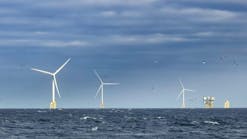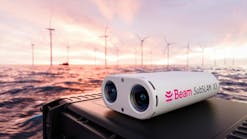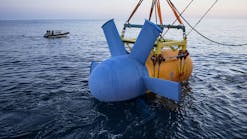Transferable skills: Offshore energy services sector continues to develop innovative technologies
Editor's note: This story first appeared in the September-October 2022 issue of Offshore magazine's first annual Offshore Wind Special Report. Click here to view the full Offshore issue or click here to view the special report.
By Leslie Beyer, Energy Workforce & Technology Council
Today’s business enterprise is defined by seeking new and improved methods to operate more efficiently and effectively, including the offshore oil and gas and offshore wind industries. In both of these critical areas of energy production, innovative technologies are leading the way in safety, operations, emissions reduction, and the gathering and processing of data.
One of these drivers, digital technology, is critical to the development of both energy systems and imperative to the future of energy production. Energy service providers have long played an important role in the technical advancement of the upstream oil and gas industry. Digitalization, remote technology and automation are all working together to accelerate the expansion to cleaner energy production. The sector is also implementing technologies like artificial intelligence (AI), automation, cloud computing, digital twins, digitalized drilling equipment, fugitive emission reduction, Internet of Things, machine learning, predictive analytics, remote monitoring and analytics, robotics and ROVs to work more efficiently and reduce emission in both offshore oil and gas and offshore wind projects.
In other examples of dual-use energy services technology, geophysical datasets are collected via bathymetry (measuring the depth of water in oceans), side scan sonar detects objects on the sea floor, and high-resolution seismic and magnetometry characterize geological features, critical for the development of oil and gas or wind energy infrastructure offshore.
Energy Workforce member company Fugro uses its RAMMS (Rapid Airborne Multibeam Mapping System) to deliver depth penetration and point densities for fast and accurate measures of ocean depth in nearshore and coastal waters via small aircraft or uncrewed aerial vehicles. These systems help improve project safety and sustainability by limiting the number of crews needed in the field and reducing fuel demands.
To gain further insight into seafloor conditions, companies rely on side scan sonar technology, which generates an acoustic picture of the seafloor. Data collected produce a photo-like image of the seafloor. Using AI to analyze the data, the technology identifies boulders, maps their footprints, and determines length, width and height, improving accuracy.
Automated technologies also enhance both offshore wind and oil and gas alike. One such example is a cloud-based system that enables workers located in offsite command centers to perform offshore survey tasks as if they were physically on board the vessel. ROV technology from Energy Workforce member company Oceaneering International is used in offshore oil and gas to monitor offshore wind facilities, providing significant dual use.
Energy Workforce member company NOV is supporting offshore wind with gusto-designed wind turbine installation vessels. A semisubmersible hull has been developed for the offshore floating wind market, and the company works with shipyards to potentially industrialize the technology in much the same manner it has done for floating rigs. NOV also has developed offshore windmill installation vessels and installation systems.
In its June 30, 2021, report, Evercore ISI’s James West said, “We believe leaders in the offshore oil and gas industry, such as NOV, will be instrumental in the success of floating wind, which utilizes similar mooring systems and subsea cables, as well as expertise in risk reduction and project execution. NOV is also helping to scale up fixed-bottom offshore wind development, with the company contracted to design and supply equipment for newbuild wind turbine installation vessels capable of efficiently installing the largest wind turbines.”
Both industries also require significant investment in manufacturing and large equipment, depending largely on the same supply chain, and requiring maintenance through technology and the energy workforce. The energy services sector will continue to strive for and develop new and innovative technologies that reduce emissions and drive efficiencies, supporting energy production across systems that is critical for growing global demand.
Looking to the future and relying on the technology development that has always characterized this sector will serve us well in producing offshore energy across systems and providing energy security for the US and its allies.






